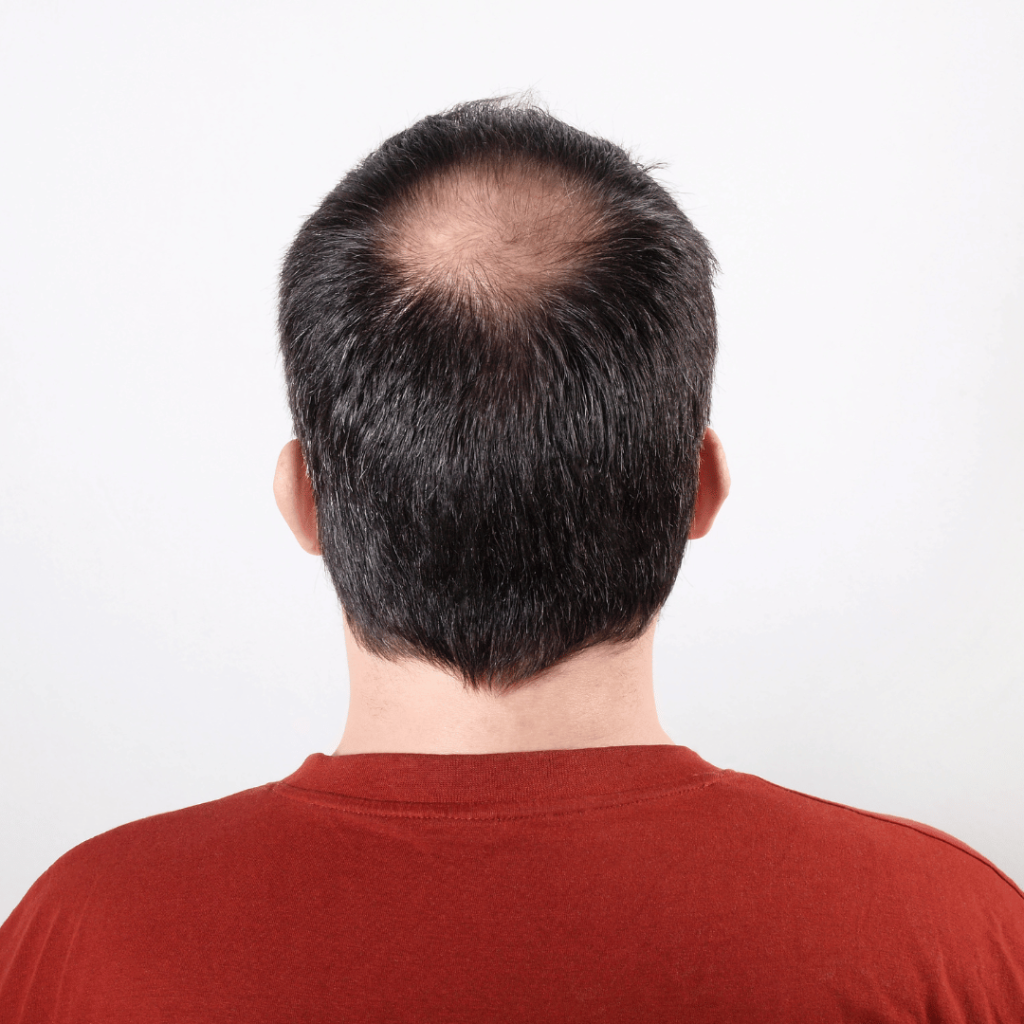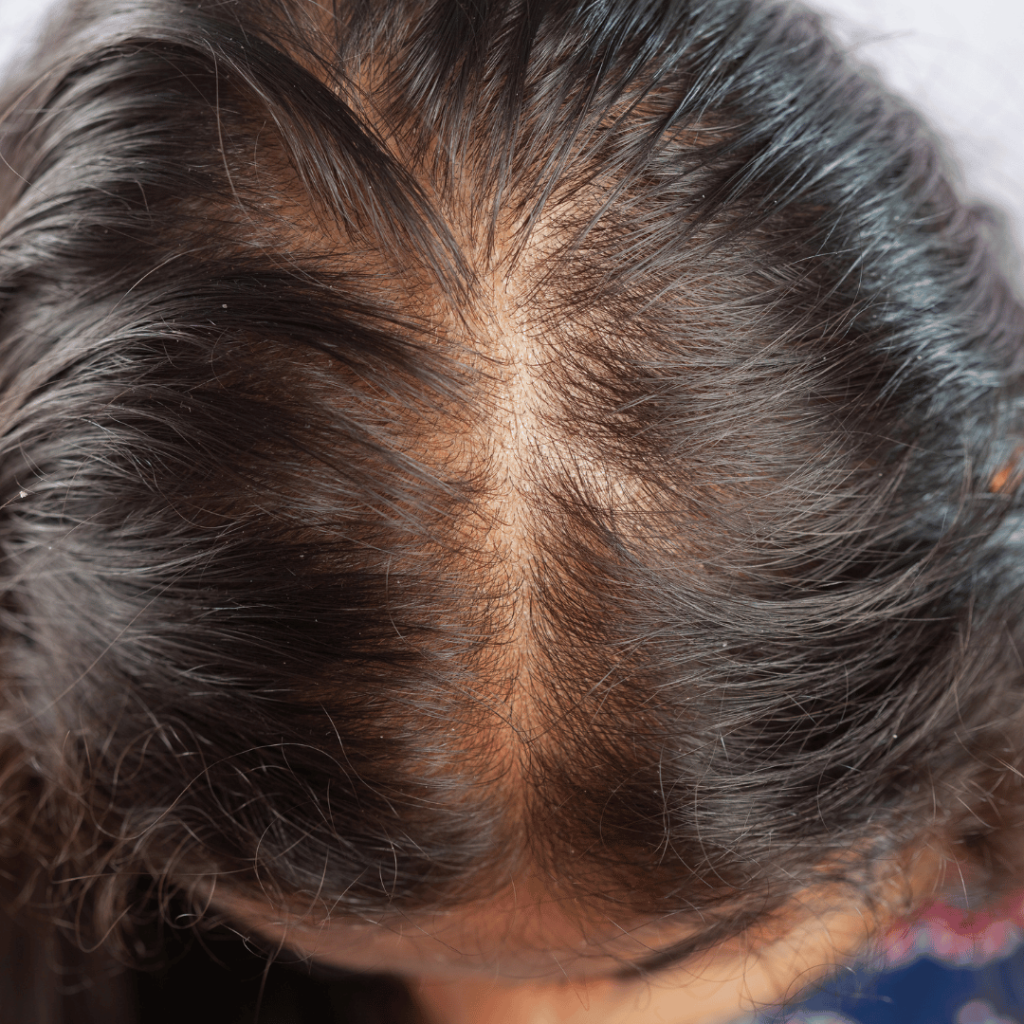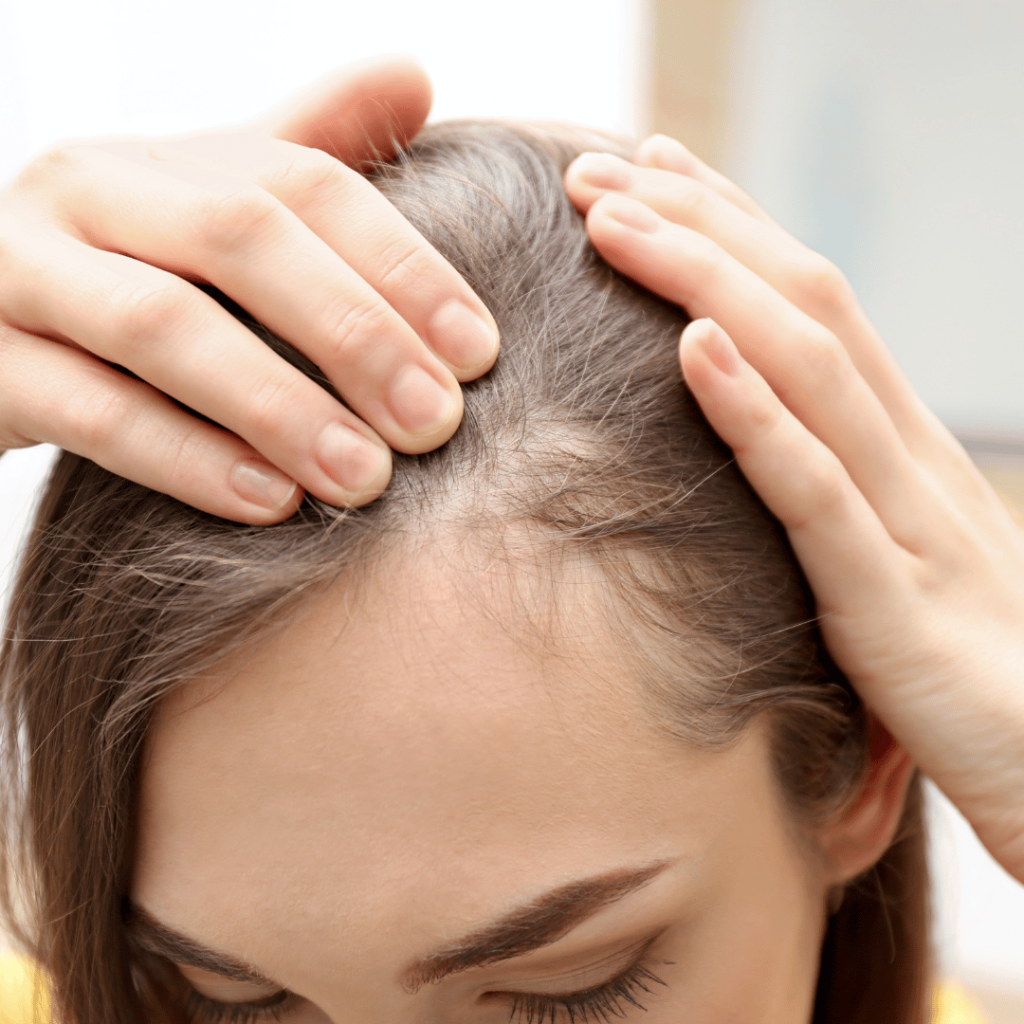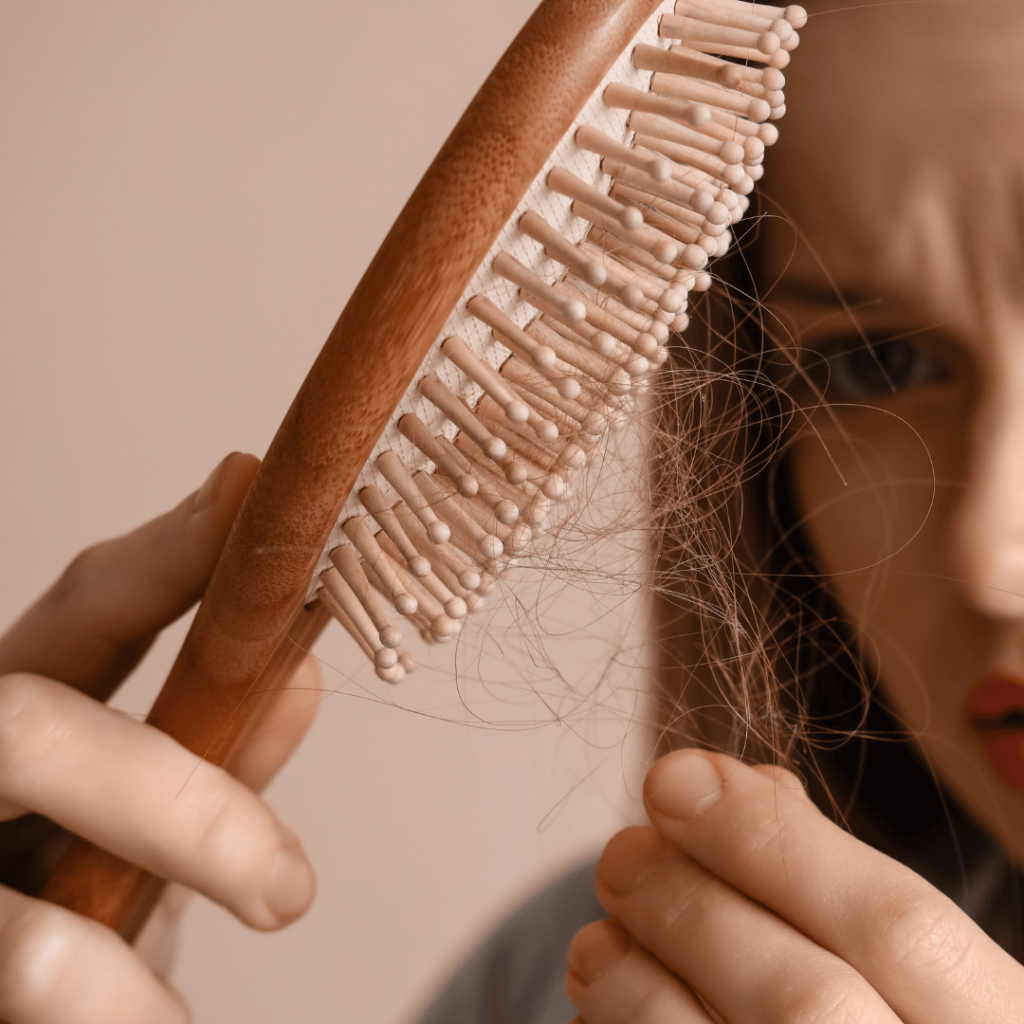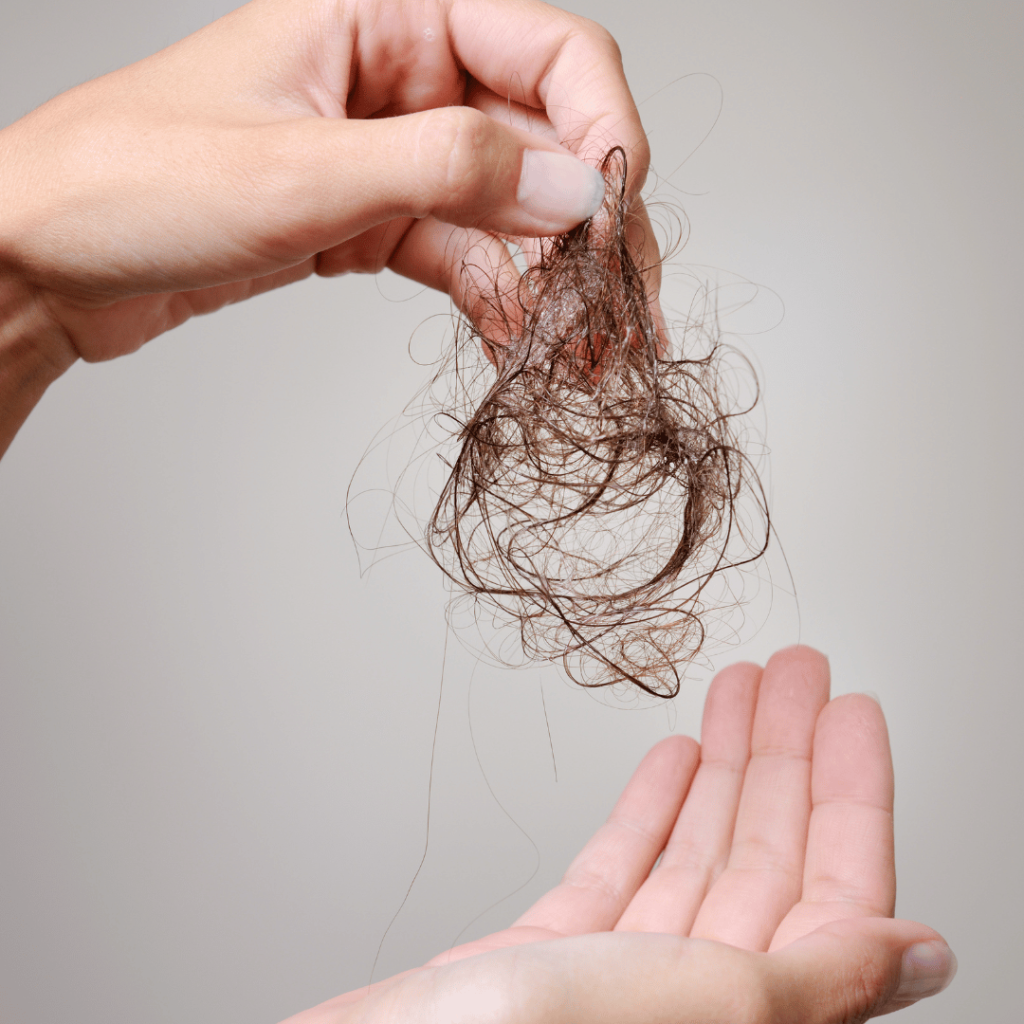Hair Conditions
The aim of a Clinical Trichologist is the diagnosis and treatment of diseases and disorders of the hair and the scalp.
It is surprising how many conditions this embraces, ranging from dandruff (pityriasis capitis) and seborrhoeic dermatitis to fairly rare genetic disorders and the consequences of endocrine dysfunction.
Androgenetic Hair Loss
Androgenetic hair loss is a common form of hair loss in both men and women. In men, this condition is also known as male-pattern hair loss, and in women is known as female-pattern hair loss.
Male Pattern Hair Loss
Male pattern hair loss usually starts either with a recession to the temples or a diffuse thinning to the crown and can be followed in some cases by a gradual thinning, then a complete denuding of the top. Very rarely is the hair lost on the sides and back although men over seventy can lose hair in the neck area. Both the Hamilton and the Norwood scales classify Androgenetic hair loss in men.
Androgenic hair loss has three causative factors:
- genetic predisposition
- the presence of the androgen testosterone
- the age of the patient
Male pattern baldness is more commonly inherited from the maternal grandfather.
At puberty, more of the male hormone testosterone circulates around the body causing hairs that are genetically programmed (in the pattern areas) to produce finer and shorter hairs with each new cycle of hair growth. Testosterone reaches the target organ, in this case the hair follicle, where the enzyme 5α-reductase changes testosterone into the highly potent hormone di-hydro testosterone, which causes the above affects.
Female Pattern Hair Loss
Female pattern hair loss presents a diffuse thinning to the front and crown area of the scalp (Ludwig pattern) and never at the sides and back from this reason alone. Partings seem wider and the scalp seems more noticeable at the front and the top of the head. This is a slow, gradual process and rarely does it completely denude the area.
Androgenetic hair loss in women usually begins with the hormone changes after puberty, pregnancy or menopause and is fairly common in ladies over 80 years of age. Although there is normally no increased hair shedding noticed with this type of loss, there are cases of long-term excess shedding (telogen effluvium) that precede this condition. Androgenetic hair loss has three causative factors, age, inheritance and the presence of the hormone testosterone. Postmenopausal thinning is related to oestrogen reduction.
Telogen Effluvium (Symptomatic/Reflective Loss)
By far the most common type of excess hair shedding in women is acute telogen effluvium (ATE) but when prolonged it is termed chronic telogen effluvium (CTE).
Acute Telogen Effluvium
Acute telogen effluvium presents a sudden excess shedding of hair in a diffuse distribution throughout the scalp. A large amount of hairs will be seen in the brush and comb, particularly so when the hair has been shampooed and conditioned. On examination of the scalp many hairs will come away on minor traction. There will also be many short re-growing tapered hairs of a similar length through the scalp; the length of the hairs depends on the duration of the condition.
Chronic Telogen Effluvium
When excess hair shedding lasts longer than nine months it is termed Chronic. Chronic telogen effluvium often starts with a sudden shedding caused by trauma, but sometimes there is a gradual onset and seemingly an unspecific cause. Hair sheds relentlessly, sometimes fluctuating in the amount of loss. There is loss of hair density, particularly to the longer lengths, and there is also a diffuse thinning to partings. Hair does not reach the length it used to and there are many re-growing tapered hairs of differing lengths throughout the head.
With chronic telogen hair loss the re-growth is still present, but at differing lengths. Mostly longer hairs will fall, but shorter ones are also noticed. Because the growing length is shortened the hair will not seem to grow.
Anagen Effluvium
Anagen effluvium is a drastic hair shedding in the anagen growth phase soon after chemotherapy or ingestion of poisons due to the direct toxic effect on rapidly dividing cells in the hair bulbs. It causes most of the hair to fall out soon after chemotherapy, but happily most people re-grow their hair within a short period after stopping treatment.
Alopecia Areata
Often the most drastic type of hair loss, alopecia areata presents a number of circular completely bald patches. These can sometimes merge with other patches The hair follicles are clearly visible and the earliest patch will often be re-growing fine, often white hairs from the centre of the patch.
This condition is unpredictable and can last from six months to many years depending on the causative factors. When the hair loss covers the whole scalp it is termed alopecia totalis. When the whole body is affected it is called Alopecia universalis.
Ophiasic Areata
Ophiasic areata is a marginal presentation of alopecia areata and can affect the nape area as well as the front and sides of the scalp. This type of alopecia areata can be more persistent.
Traumatic Areata
Traumatic alopecia frequently appears on the margins of the scalp and sometimes shows irregular patchy hair loss to the crown area. There will be breakage to these area and also short re-growing hairs. It is caused by excessive chemical, thermal or physical trauma as well as scratching the scalp. Traumatic alopecia is frequently seen on Afro-type hair when subjected to any or all of the above hairstyling methods over long periods.
Traumatic Hair Loss or Breakage
Trichotillomania is a form of self-inflicted physical trauma and is a variant of obsessive-compulsive disorder. It is very common in children and they usually grow out of the habit. It is however a much more difficult habit to break in adults.
Scarring Alopecia
Scarring alopecia often presents itself as an irregular area of shiny bald skin, which can be a darker or lighter colour than that surrounding it. No hair follicles are present and the skin can be atrophied, or even raised and thickened (Keloid). A scar is formed when a wound heals itself after deep tissue damage. The structure of scar tissue differs from normal skin and does not support normal hair growth. There are three main causes of scarring: chemical, infection and autoimmune disease.

